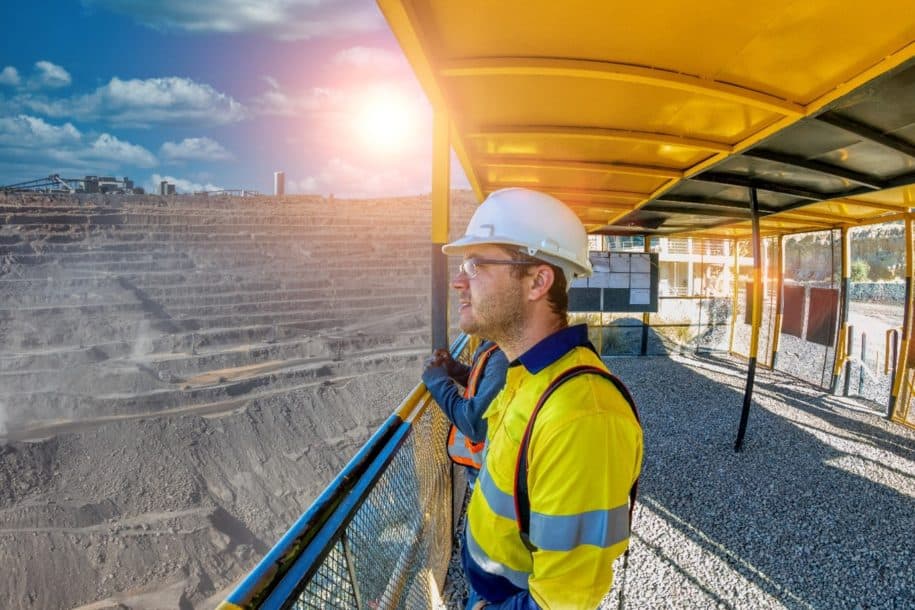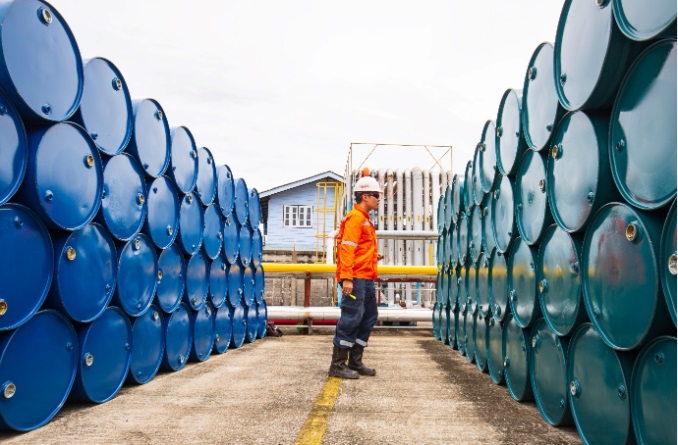Years ago, when experts were still in disagreement over the forces that drive climate change and utilized different climate models to simulate its future impact, most of these findings were irrelevant to the average citizen. Flash forward to the present day and we have gone past climate change predictions. As everyone is now experiencing extreme weather events an increasingly frequent and intense basis, there is no longer the question of proving that climate change exists. Prolonged droughts, wildfires, and stronger storms have become the world’s new normal, and climate change is establishing strength enough to threaten developing and developed nations alike.
How is climate change affecting businesses?
Even the largest corporations are not immune to the collateral damage associated with climate change. According to the Carbon Disclosure Project (CDP), supply chains will endure up to US$1.3 trillion in losses by 2026 based on environmental risks alone, and could miss an additional US$120 billion to corporate buyers. 93% of these costs can be attributed solely to climate change. The US Global Change Research Program further estimates that by the year 2090, climate-induced labor productivity decline will have cost national companies up to US$220 billion annually. Disruptions to supply chains are just the beginning of the negative impacts to businesses caused by climate change. These staggering statistics are an urgent call to EH&S leaders to account for climate change when planning programs and policies for workplace EH&S improvement.
Decreased Productivity
Employers are held responsible for the safety of workers. This responsibility extends to protecting workers from extreme heat conditions. Worsening heat waves are putting workers at greater risk for heatstroke, severe dehydration, and fatigue. This ruling is not only in the worker’s best interest but the organization’s as well. Multiple studies have shown that higher temperatures lead to a decrease in worker productivity. With global warming bringing ambient temperature higher, those working in the outside environment (who already experience intense heat) may now have to work under more strenuous conditions and degrees of discomfort, which causes workers to slow down and take more frequent breaks to recover. A report by the International Labor Organization estimates that around 2.2% of working hours (which equates to a monetary investment of about US$2.4 trillion) will be lost by 2030. It is worth noting that these findings are a conservative estimate as the study operates around two assumptions:
- that global temperature rise will not exceed 1.5 degrees Celsius by the end of the century.
- that agriculture and construction work are done under shade.
Without adequate efforts to mitigate climate change, end-line solutions to make workers comfortable and productive amid declining environmental conditions will be insupportable, as the cost of continuing business operations will become extremely expensive and impractical.
Increased Risk for Injury
Higher ambient temperatures lead to higher risks for heat-related injuries and illnesses such as heat rashes, heat cramps, and death due to heatstroke. Heat exhaustion leading to short-term cognitive and physical impairment can diminish workplace safety, especially for those engaged in labor-intensive work. A recent study about the impacts of higher temperatures on workers in California found that days with temperatures of 95°F or higher carry a 9% greater risk for worker injury than cooler days. The National Institute for Occupational Safety and Health warns that individuals who are over the age of 65, overweight, or have heart issues are more susceptible to heat stress.
Workplace injuries harm business performance in many ways, including
- Reduced productivity due to downtimes and sub-optimal employee performance.
- Increased medical costs for treatment and recovery of injured employees.
While climate change solutions are much bigger than what a single company can do, EH&S leaders must at least devise protocols that protect its employees from the serious health implications of hot work environments.
3. Worse Air Pollution
Climate change and air pollution are tightly intertwined. Warmer weather means greater dependence on air conditioning. It also makes people more likely to forgo active transport such as walking or biking to work. Summers becoming hotter and winters becoming colder generally translates to an increase in energy consumption.

According to the Environmental Protection Agency (EPA), household air conditioning accounted for 17% of the annual electricity consumption in 2015 and on average an American at home in 2020 consumes almost twice as much energy as they would have in 1973.
The use of more energy for cooling leads to higher greenhouse gas emissions, exacerbating global warming. As the ambient temperature gets higher, households, commercial buildings, and offices use greater amounts of air conditioning, continuing the vicious cycle. Additionally, higher temperatures lead to stagnation events; this is when a layer of unmoving hot air traps pollutants in the lower atmosphere, exposing people to dangerous levels of pollutants. Commuting in areas with recurring stagnation events increases workers’ susceptibility to the negative health impacts of air pollution, including cardiac diseases, lung cancer, and respiratory infections (COVID-19).
Climate change is costly
Extreme weather events put employees in unsafe and uncomfortable situations, harming their health and impacting their productivity. Suboptimal performance and downtimes from injuries also translate to severe logistical and financial implications, threatening a business’ long-term stability. For indoor workplace environments, air conditioning has been the go-to answer to rising ambient temperatures. Unfortunately, this solution only feeds fuel to the fire, as higher energy consumption also results in higher greenhouse gas emissions. Stagnation events also lead to pollutant accumulation, putting employees at risk for short and long-term health consequences. As such, businesses need to pour substantial effort into reducing greenhouse gas and air pollutant emissions, while simultaneously establishing protocols that protect their employees from the impacts of climate change.
References
CDP. (2021). Transparency to Transformation: A Chain Reaction – CDP Global Supply Chain Report 2020. Retrieved from https://6fefcbb86e61af1b2fc4-c70d8ead6ced550b4d987d7c03fcdd1d.ssl.cf3.rackcdn.com/cms/reports/documents/000/005/554/original/CDP_SC_Report_2020.pdf?1614160765
Climate Change Indicators: Residential Energy Use | US EPA. US EPA. (2021). Retrieved 31 October 2021, from https://www.epa.gov/climate-indicators/climate-change-indicators-residential-energy-use.
Climate Change is Threatening Air Quality across the Country. Climatecentral.org. (2021). Retrieved 31 October 2021, from https://www.climatecentral.org/news/climate-change-is-threatening-air-quality-across-the-country-2019.
Fourth National Climate Assessment. Nca2018.globalchange.gov. (2021). Retrieved 31 October 2021, from https://nca2018.globalchange.gov/#sf-1.
Grand Challenges | New UCLA study finds higher temperatures increase risk of workplace injury. Grandchallenges.ucla.edu. (2021). Retrieved 31 October 2021, from https://grandchallenges.ucla.edu/happenings/2021/07/16/new-ucla-study-finds-higher-temperatures-increase-risk-of-workplace-injury/.
Increase in heat stress predicted to bring productivity loss equivalent to 80 million jobs. Ilo.org. (2021). Retrieved 31 October 2021, from https://www.ilo.org/global/about-the-ilo/newsroom/news/WCMS_711917/lang–en/index.htm.
NIOSH Heat Stress Topic Page. Centers for Disease Control and Prevention. (2021). Retrieved 31 October 2021, from https://www.cdc.gov/niosh/topics/heatstress/default.html.
Author Bio
The SafetyStratus Research Advisory Group (RAG) brings together thought leaders from the global environmental, health, and safety community to promote best practices and provide key insights in the profession and the industries they serve. The Research Advisory Group also advocates, where practical, the intersection of and advances with the use of technology, such as the SafetyStratus enterprise EHS software platform. Group membership consists of representatives from across varied disciplines and market sectors as well as select members of the SafetyStratus team.
The primary objectives of the SafetyStratus RAG partnership are to:
- Build a strategic partnership between EHS practitioners and the SafetyStratus team.
- Provide engaging and practical content to the global EHS community.
- Provide discipline and market feedback specific to SafetyStratus products and services.
While the objectives of the RAG are varied, the primary public-facing outcome will be available through engaging and practical content found on the SafetyStratus resource pages. Various articles, papers, and other valuable resources will be produced and shared as part of an ongoing effort to cultivate a robust community. Ultimately, the SafetyStratus RAG will expand to have a broader reach and provide opportunities for more inclusion by all interested EHS professionals in a collaborative community environment.



